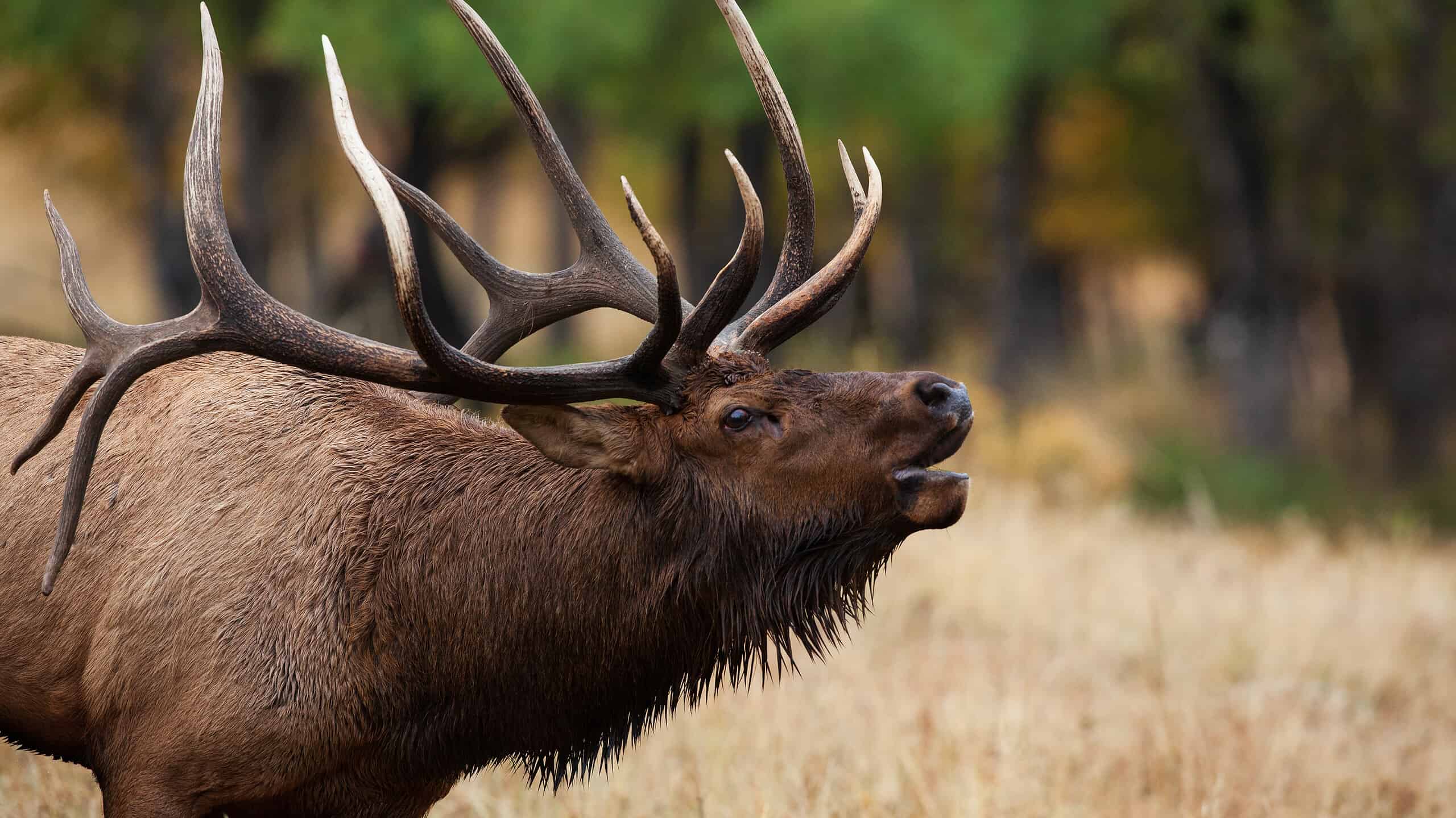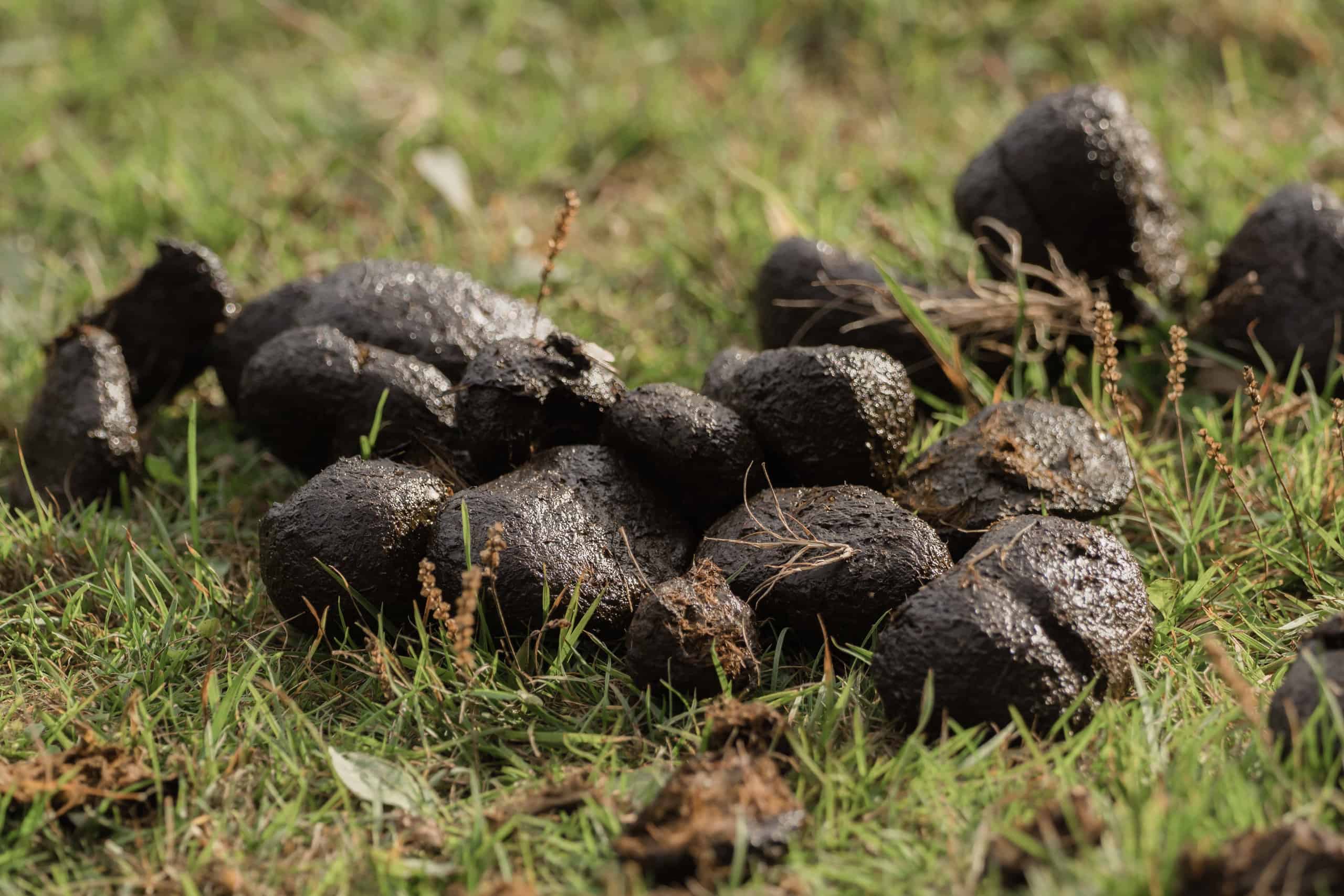Bear poop is typically dark and contains seeds and fur remnants, while moose poop is lighter, segmented, and full of vegetation. Bears are omnivores, so their poop has a variety of content, whereas moose are herbivores, resulting in plant-heavy feces.
The differences in diet and digestive systems between bears and moose lead to distinguishable characteristics in their waste products. Understanding these distinctions can be helpful in tracking and identifying these animals in the wild. Analyzing the composition of bear and moose poop can provide valuable insights for researchers and wildlife enthusiasts alike.
By paying attention to the details of animal scat, one can learn more about the behaviors and habits of these majestic creatures in their natural habitats.

Credit: a-z-animals.com
Contents
The Battle Begins
Bear Poop
Bear poop can vary in size and shape, depending on the bear’s diet and health.
Moose Poop
Moose poop tends to be rounder and larger compared to bear poop.
Composition
When comparing Bear Poop and Moose Poop, examining their composition provides valuable insights into these animals’ diets and habitats. Understanding the composition of their poop can reveal crucial information about the health and behavior of bears and moose in the wild.
Bear Poop
Bear Poop is usually dark in color and cylindrical in shape due to their omnivorous diet, containing a mix of plant materials and animal remains.
- Bear poop may have a sweet, somewhat fruity smell, often a result of their consumption of berries and fruits.
- The content of bear poop may include undigested seeds, fur, bone fragments, and occasionally insects.
- The composition of bear poop reflects the seasonal availability of food sources for bears in their habitat.
Moose Poop
Moose Poop differs from bear poop, being more spherical and segmented, reflecting moose’s herbivorous diet primarily composed of vegetation.
- Moose poop is often dark brown in color, containing a high percentage of plant fibers and little odor.
- The texture of moose poop is firm and dense, reflecting the digestive process of breaking down fibrous plant materials.
- Examining moose poop can provide insights into the types of plants available in the moose’s habitat and their foraging habits.
Ecological Impact
Bear poop and moose poop both have a significant ecological impact on the environment. These waste products play essential roles in nutrient cycling, seed dispersal, and vegetation growth, ultimately shaping the diversity and health of ecosystems.
Bear Poop
Bear poop, also known as scat, is an important source of nutrients for many organisms. It contains undigested seeds, which contribute to the dispersion of plants and aids in the regeneration of forests. Bears often deposit their scat in specific areas, marking their territories, which can affect the distribution of plant communities and the behavior of other wildlife.
Moose Poop
Similar to bear scat, moose poop also contains essential nutrients and seeds, contributing to the ecological balance. The moose’s grazing habits affect the vegetation structure, and its droppings play a crucial role in nutrient recycling and plant regeneration. The presence of moose in an area can influence the biodiversity and composition of plant species, thus influencing the habitat for various animals.
Uses In The Wild
In the wild, both bear poop and moose poop serve important purposes that may surprise you. Despite their unappealing appearance, these droppings play a significant role in the ecosystem, contributing to the balance and survival of various plant and animal species.
Bear Poop:
Bear poop, also known as scat, might seem useless at first glance, but it has several important uses in the wild:
- Fertilizer: Bear scat contains nutrients that enrich the soil, aiding the growth of plants and vegetation. When bears consume berries, their digestive system breaks down the seeds, making them more fertile when expelled in their droppings.
- Marker: Bears use their scat as a means of communication, marking their territories to let other bears know they are present. This helps establish boundaries and reduces conflicts among these magnificent creatures in the wild.
- Food Source: Believe it or not, some animals rely on bear poop as a food source. Insects such as dung beetles and fly larvae feast on the decomposing material, aiding in the process of decomposition and nutrient recycling.
- Research: Scientists often analyze bear scat to understand the diets, health, and habits of bears in different regions. By studying their droppings, researchers gain valuable insights into the overall wellbeing and conservation of these majestic creatures.
Moose Poop:
Just like bear poop, moose droppings possess their own unique set of uses in the wild:
- Decorative Crafts: Moose poop can be transformed into unique decorative crafts. With a bit of creativity, artists can transform these droppings into ornaments, keychains, and even jewelry. Though it may seem odd, these creations pique interest among nature enthusiasts.
- Foraging Indicators: Certain animals, such as squirrels, rely on moose droppings as an indicator of food availability. They know that where there is moose scat, there is a higher chance of finding nutrient-rich plants and vegetation to sustain themselves.
- Research Purposes: Just like bear poop, moose droppings provide valuable insights into their dietary habits and overall health. By examining the contents of moose scat, experts can understand the essential components of their diet and the impact it has on their population.
- Nutrient Cycling: Moose poop contains undigested plant material that, once expelled, aids in the decomposition process. The broken-down matter lends itself to the regeneration of nutrients in the soil, creating fertile conditions for new plant growth.
While it may be tempting to dismiss bear and moose poop as mere waste, their significance in the wild ecosystem cannot be understated. From contributing to soil fertility and enabling nutrient recycling to serving as communication tools and artistic inspiration, the uses of bear and moose droppings highlight the interconnectedness of life in the wild.
Conclusion: The Winner
In the battle of Bear Poop vs Moose Poop, Moose Poop emerges as the clear winner. Its high fiber content and nutritional value make it a superior choice over Bear Poop. Moose Poop is not only larger but also supports a healthier ecosystem.
Bear Poop
Bear poop, also known as scat, is one of the fascinating aspects of these magnificent animals. Typically found in wooded areas, bear poop is often discovered by hikers and outdoor enthusiasts during their explorations.
Measuring around 5 to 12 inches in length and 1 to 2.5 inches in diameter, bear poop is quite distinctive. It has a tubular shape and contains a variety of materials, depending on the bear’s diet. Berries, plant matter, and even small animal remains can be found in bear scat.
Furthermore, bear poop tends to have a strong smell that can be easily detected. This scent is naturally used by bears to mark their territory and communicate with other bears in the area.
From an environmental perspective, bear poop actually plays a vital role. As bears travel, they distribute seeds from the berries they consume, aiding in the growth of plants and trees. Additionally, the decomposition of bear scat enriches the soil, promoting a healthy ecosystem.
Moose Poop
In comparison to bear poop, moose poop has its own distinct characteristics. Moose are herbivores, and their diet primarily consists of leaves, twigs, and other vegetation. As a result, moose scat is composed mainly of plant matter.
Moose droppings are slightly larger than bear droppings, measuring around 3 to 5 inches in length. They have a more pellet-like appearance, similar to deer poop. This is due to the fact that moose have a more efficient digestion system, resulting in drier and more compact scat.
Similar to bear poop, moose scat also has an odor, though it is typically milder. This scent helps attract other moose, signaling their presence in the area.
From an environmental perspective, moose scat also contributes to a healthy ecosystem. The undigested plant matter in moose poop provides nutrients to the surrounding soil, supporting the growth of vegetation and essential microorganisms.
Environmental Impact
When it comes to the environment, both bear poop and moose poop play critical roles. They aid in seed dispersal and help enrich the soil in their respective habitats.
| Bear Poop | Moose Poop | |
|---|---|---|
| Size | 5 to 12 inches in length, 1 to 2.5 inches in diameter | 3 to 5 inches in length |
| Shape | Tubular | Pellet-like |
| Odor | Strong | Mild |
| Diet | Berries, plant matter, small animal remains | Leaves, twigs, vegetation |
| Environmental Impact | Seed dispersal, soil enrichment | Seed dispersal, soil enrichment |
In conclusion, while both bear poop and moose poop have their unique characteristics, they equally contribute to the environment. The winner, therefore, is the ecosystem itself, benefiting from the seed dispersal and soil enrichment provided by both animal types.

Credit: www.nps.gov

Credit: a-z-animals.com
Frequently Asked Questions On Bear Poop Vs Moose Poop
Can You Tell The Difference Between Bear Poop And Moose Poop?
Bear poop and moose poop have distinct differences. Bear poop is larger, with a tubular shape and often contains berries or fur. Moose poop, on the other hand, is smaller and rounder, resembling large marbles. By analyzing their size, shape, and contents, you can easily differentiate between the two.
Is Bear Poop Dangerous?
Bear poop can carry harmful bacteria and parasites, so it’s important to avoid direct contact. If you come across bear poop while hiking or camping, make sure to wash your hands thoroughly with soap and water. Additionally, always practice proper hygiene and dispose of waste properly to prevent any potential risks.
What Does Bear Poop Look Like?
Bear poop can vary in color and texture depending on their diet. Generally, it is dark brown or black in color and has a strong, pungent odor. It is often tubular in shape and may contain remnants of berries, fur, insects, or grass.
The size of bear poop is larger compared to other animals, making it easily recognizable.
Conclusion
In the wild, both bear poop and moose poop provide valuable insights into the animals’ habits and diets. Understanding these differences can enhance your outdoor experiences and help you better appreciate nature’s diversity. By observing and learning from animal scat, you can gain a deeper understanding of the wildlife that surrounds you, making your outdoor adventures even more fulfilling.


